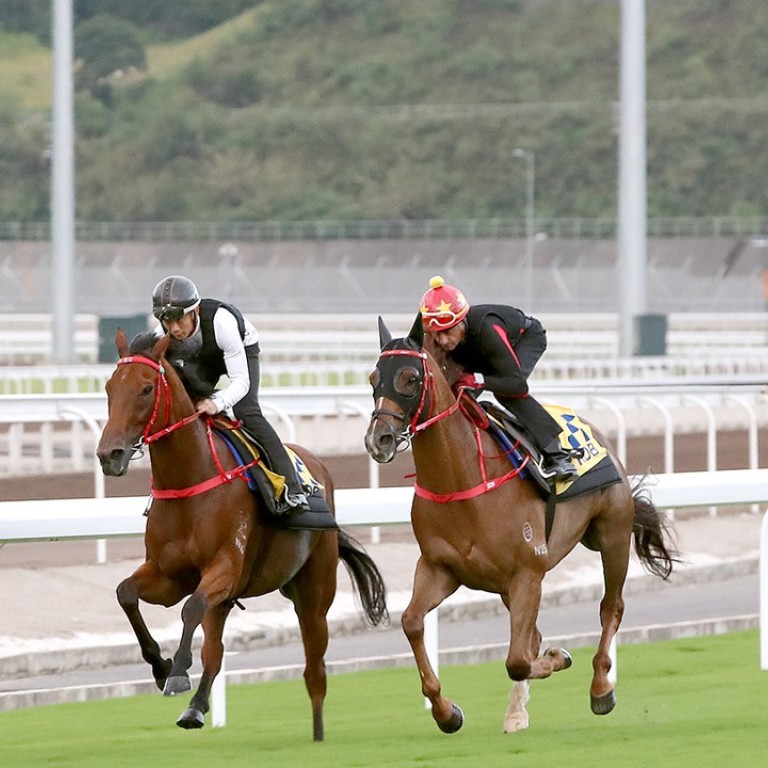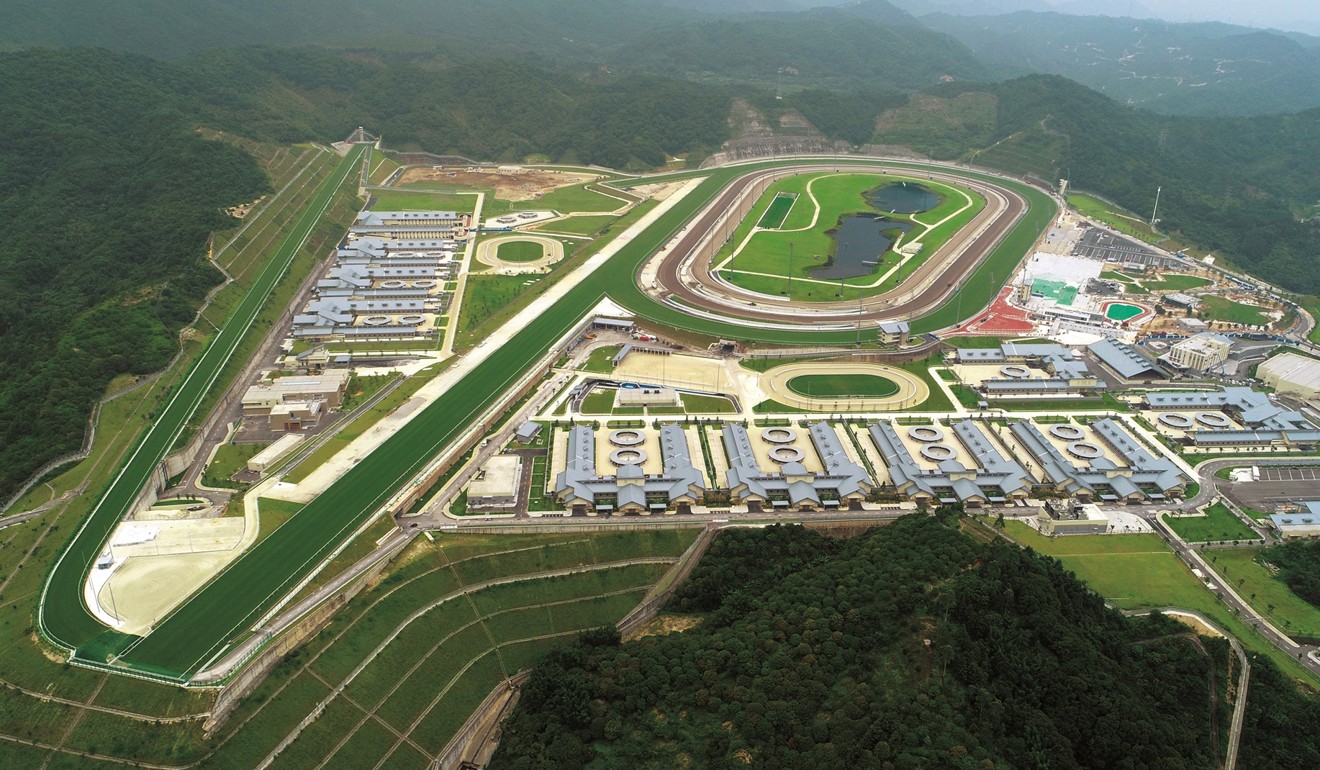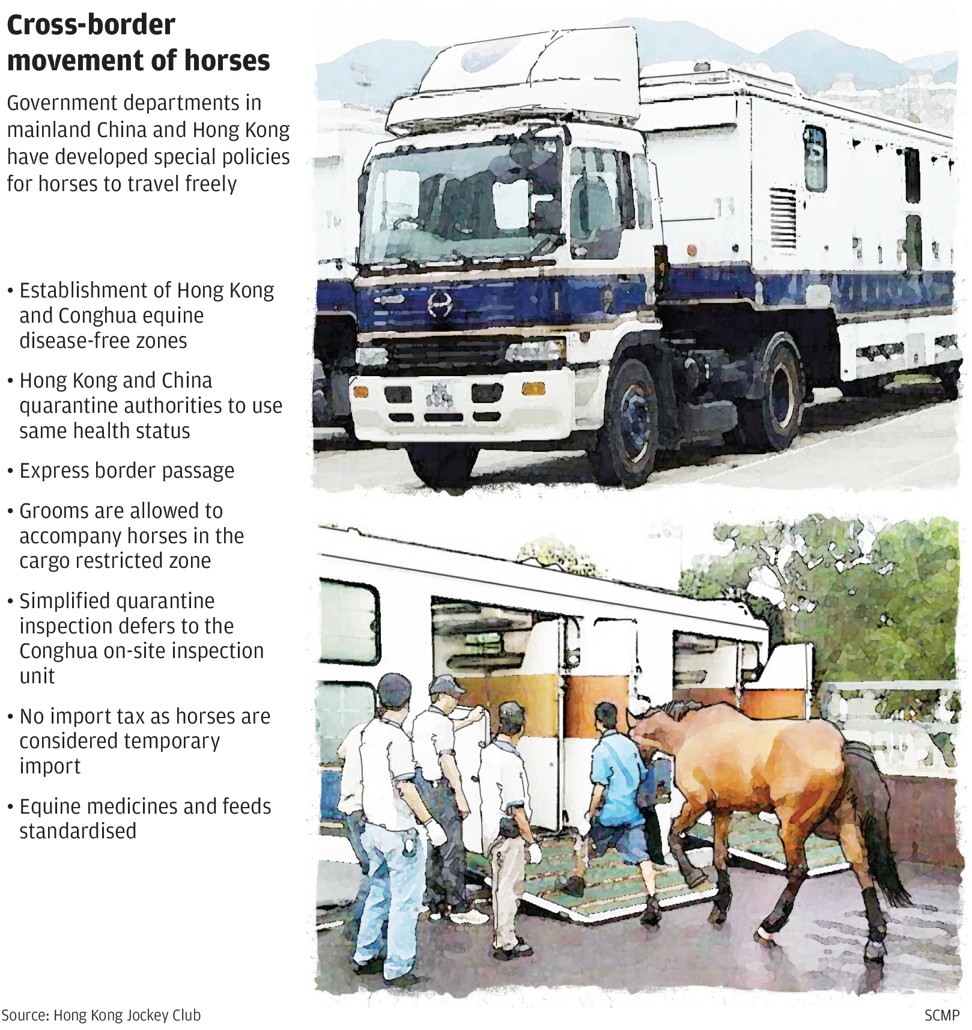
How ‘one country, two systems’ is benefiting Hong Kong horse racing, of all things
David Dodwell says cross-border collaboration can pay off. A recent success story is the opening of the Hong Kong Jockey Club’s training centre across the border, which was made possible by concessions from mainland officials
One such agenda item was tabled by Henry Tang Ying-yen, the former aspirant chief executive now keeping a very low profile. He began by complaining that the limited space available in Hong Kong for stabling racehorses meant that he could own just two horses.
He paused to let most in the room splutter into their tea, then pressed on: he wanted the government to stable Hong Kong racehorses across the border in Shenzhen, which would deepen and enrich the pool of equestrian talent in Hong Kong, and allow him to own more horses.
After a short debate, the idea was shot down. The most potent objection was not the massive cross-border challenge of protecting Hong Kong’s pampered and expensive horses from a wide range of equine diseases lurking on the mainland. Rather, it was a richly flippant debate about whether the horses would be allowed right of abode in Hong Kong – a very controversial issue for Hong Kong’s human population at the time.
With no understatement, Chris Ganswindt, the club’s head of information technology and sustainability, said Conghua had been “a monumental project for the club”.
After two lacklustre seasons, and amid worries that Hong Kong’s millennials have less passion for the races than our older generation, fresh impetus is obviously needed. Hong Kong is, without question, among the world’s leading horse racing economies, and is keen to stay that way.
The Conghua project has involved cooperation between myriad government agencies on the mainland and Hong Kong, and began not with Tang, but with the Jockey Club’s support for equestrian events in the Beijing 2008 Olympics and the 2010 Guangzhou Asian Games.

With electric fences, biosecurity gates, air locks, disinfectant washes and human screening, no Chinese horses are to be allowed within a 5km radius of Conghua. Some 1,600 security cameras monitor movement around the facility 24 hours a day.
Horses commuting from Conghua to Hong Kong to race will travel in convoys of four to five specially designed floats. The horses must have cross-border permits, health certificates and entry-exit declarations.
With an estimated HK$100 million of precious equine cargo aboard – officially called VIAs, or very important animals – the convoys will be scanned (for contraband), sealed (with grooms accompanying each horse) and then GPS-monitored along the entire route. No scruffy mainland horses will be allowed within 1km of the convoy route.
When fully in operation, Conghua will house around 600 horses, meaning a total of 1,800 horses will be available to compete in Hong Kong’s 88-meeting season. For now, only nine of Hong Kong’s 22 trainers are being allowed to set up in Conghua – they have to be stabling at least 55 horses at present, and must house 25 on the mainland.
All this has been achieved while China itself still forbids horse racing. However, to catch an aerial glimpse of the Conghua facility is to see that it is begging to host races. It really is a state-of-the-art facility. It already has a parade ring. All it lacks is spectator stands. Already, the Jockey Club is planning to hold showcase races – with no betting – at Conghua next year.

I sense that Deng Xiaoping would be pleased. Before the handover, he promised: “Horses will still run, stocks will still sizzle, dancers will still dance.” I don’t see much sizzling in the stock market of late, nor much dancing, but his successors have made sure the horses will still run – and in style.
David Dodwell researches and writes about global, regional and Hong Kong challenges from a Hong Kong point of view



